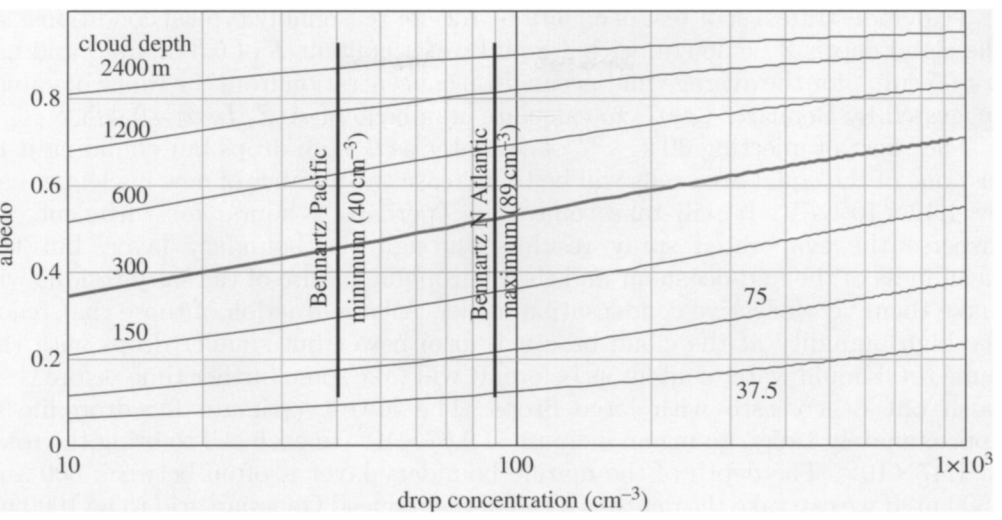In the video we showed introducing geoengineering techniques we discussed one form of geoengineering that has not yet been studied in detail in this blog. This is the injection of some particular gases into the stratosphere.
The stratosphere is the layer just above the troposphere. Temperature in the troposphere decreases while you increase height. In the stratosphere is the other way round, and the limit between these two layers is defined as this inflection point. The good thing about the stratosphere is that there is no precipitation here, and therefore the particles injected into it will mainly be eliminated by gravitation onto the Earth. It is important to have in mind that global warming is leading to a warmer troposphere, and a cooler stratosphere.
 |
| Possible methods for the injection of SO2 into the stratosphere. These include airplanes, balloons, a tower or artillery. Source: Alan Robock. |
The method consists on injecting directly SO2 into the upper stratosphere. How do we know the addition of SO2 into the stratosphere would have a cooling effect? Actually, because it has already happened a lot of times. Every time a large volcano erupts, large amounts of sulphur dioxide are released into the stratosphere and converted into sulphuric acid. These particles reflect sunlight back to space, and therefore produce a significant decrease in temperature in the lower stratosphere (and an increase in the stratosphere) in the following 2-3 years. (
Alan Robock)
The greatest evidence we have is the eruption of Mount Pinatubo, the largest one in the last century. Even though global temperature decreased, as was scientifically predicted, these changes were uneven. As
Robock and Mao explained in 1992, these changes were mainly due to indirect changes in wind and North Atlantic Oscillation changes.
 |
| Change in temperature in the lower troposphere after the eruption of the Mount Pinatubo, 2001. Alan Robock, 2002 |
Several studies have been made to try to model what the results of these injections would be. Models show that global mean temperature could stay at pre-industrial levels, but, just as happened with the local effects in the eruption of Mount Pinatubo, these effects are not homogeneous (
Schmidt et al., 2012). The SAT would be slightly colder in the low latitudes and hotter in the higher latitudes. According to the different models, temperature in the Arctic will suffer an increase from 0.8K to 1.8K.
 |
| Difference in surface air temperature between geoengineering model (G1) and pre-industrial levels (piControl). |
The mean global precipitation will not remain the same as in pre-industrial times. It will decrease a value from 3.6% to 6.1%, depending on the model considered. This decrease is also not evenly distributed throughout the world.
 |
| Difference in precipitation between geoengineering model (G1) and pre-industrial levels (piControl). |
However, these images don't take into account the predictions for temperature and rain variations for the future. This is why it is interesting to consider the following, studied by
Matthews and Caldeira, 2007.
 |
| Images (a) and (b) show the projected SAT and precipitation according to the IPCC's A2 CO2 emissions scenario, without any geoengineering. Images (c) and (d) show the projection of the A2 scenario plus geoengineering. |
Advantages:
So, the effect of reducing the mean global temperature to pre-industrial levels seems really good at first sight. Also, this method is relatively cheap, and it has the great advantage of being quick (it would start acting after one year,
Shepherd et al, 2009). This makes this method very interesting in terms of the possibility of needing to abruptly cool the global mean temperature.
Disadvantages:
The temperature change is not evenly distributed, and the precipitation will be significantly reduced. This will have severe consequences like droughts, food and water supplies issues or health issues. Also, stratospheric injections of SO2 lead to the destruction of ozone (
Pitari et al, 2014), and changes in the North Atlantic Oscillation and winds are expected (
Robock and Mao, 1992).
Another important negative aspect of this kind of geoengineering is the fact that, according to studies (
Matthews et at, 2007), once you start doing it, you can never stop. Otherwise temperatures will increase just as if geoengineering had never been done. This slope would be higher that the natural process and therefore can be even worse than doing nothing because of adaptation complications for our society.
 |
| The effect in SAT under the A2 IPCC scenario (red) with no geoengineering, and the same emission scenario adding geoengineering at 2000 (blue), 2030 (green), 2050 (orange) and 2080 (purple). |
 |
| The effect in SAT under the A2 IPCC scenario (red) with no geoengineering, and the same emission scenario adding geoengineering at 2000 (blue), but stopping at 2030 (green), 2050 (orange) and 2080 (purple). We can see how all these scenarios end up approaching the original A2 scenario. |
In conclusion, we can think this method can be very interesting because of it's effectiveness and it's rapidity, but it is of
extremely high risk, because of all the studied and also some yet unstudied possible side effects in biology of human life, for instance.




















